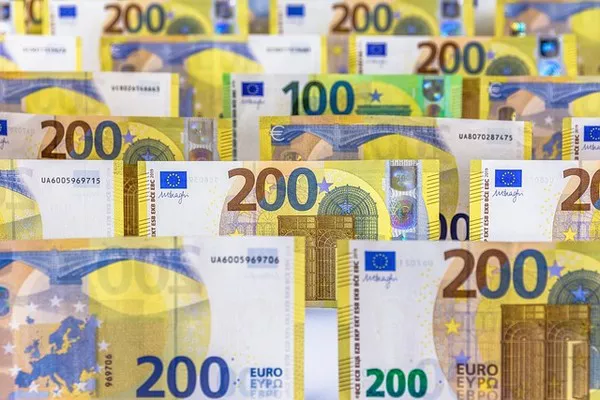The euro, the official currency of the Eurozone, plays a pivotal role in global finance and economics. Its strength, often a subject of scrutiny and analysis, influences trade, investment, and monetary policies across the globe. In recent years, the euro has faced various challenges, including economic uncertainties, political tensions, and external factors such as the COVID-19 pandemic. This article aims to assess the current strength of the euro in the context of prevailing economic conditions, examining key indicators, and exploring future prospects.
Current Exchange Rate
As of now, the euro’s exchange rate against major currencies stands as follows:
Euro to US Dollar (EUR/USD): 1.08
Euro to British Pound (EUR/GBP): 0.86
Euro to Japanese Yen (EUR/JPY):163.41
Euro to Swiss Franc (EUR/CHF): 0.95
Economic Performance:
The strength of a currency is closely linked to the economic performance of its issuing region. Despite facing headwinds in recent years, the Eurozone has shown resilience. Economic indicators such as GDP growth, unemployment rates, and inflation provide insights into the region’s economic health. In 2023, the Eurozone witnessed a moderate GDP growth rate of around 2%, signaling a gradual recovery from the pandemic-induced downturn. Unemployment rates, although still elevated compared to pre-pandemic levels, have been steadily declining, reflecting improving labor market conditions. However, inflation remains a concern, with the Eurozone experiencing a persistent but moderate inflationary pressure.
Monetary Policy:
The European Central Bank (ECB) plays a crucial role in shaping the strength of the euro through its monetary policy decisions. In response to economic challenges, the ECB has implemented unconventional measures, including quantitative easing and negative interest rates, to stimulate growth and stabilize prices. Despite these efforts, divergent economic conditions among Eurozone member states pose challenges for implementing a uniform monetary policy. Furthermore, political tensions within the Eurozone, such as debates over fiscal policies and sovereign debt issues, complicate the ECB’s efforts to maintain currency stability.
Global Factors:
External factors also influence the strength of the euro. Exchange rate dynamics, trade relations, and geopolitical developments can impact investor sentiment and currency valuation. The euro’s exchange rate against major currencies, particularly the US dollar, reflects market perceptions of Eurozone economic fundamentals relative to those of other economies. Geopolitical uncertainties, such as Brexit and trade tensions between the US and China, have contributed to currency fluctuations and increased volatility in financial markets, affecting the euro’s strength.
Trade and Investment Flows:
Trade and investment flows play a significant role in determining the demand for a currency. The Eurozone’s trade balance, consisting of exports and imports of goods and services, affects the euro’s value in international markets. Despite structural imbalances within the Eurozone, characterized by trade surpluses in some countries and deficits in others, the euro remains a key global reserve currency. Investment inflows, driven by factors such as interest rate differentials and market sentiment, also influence the demand for euros, impacting its strength relative to other currencies.
Challenges and Risks:
While the euro has shown resilience in the face of various challenges, several risks loom on the horizon. Economic disparities among Eurozone member states, exacerbated by the pandemic, continue to pose structural challenges to the currency union. Political uncertainties, including the rise of populist movements and debates over EU integration, could undermine confidence in the euro and destabilize financial markets. External risks, such as global trade tensions and geopolitical conflicts, add further complexity to the euro’s outlook, potentially leading to increased volatility and depreciation pressures.
Future Outlook:
The outlook for the euro remains subject to a range of factors, both internal and external. Economic recovery from the COVID-19 pandemic, coupled with ongoing efforts to strengthen fiscal integration and address structural imbalances, could bolster confidence in the euro and support its strength in the medium to long term. However, challenges such as inflationary pressures, geopolitical uncertainties, and divergent monetary policies among major central banks pose downside risks to the euro’s stability. Monitoring key indicators such as economic growth, inflation, and exchange rate dynamics will be essential in assessing the euro’s strength and resilience in the evolving global economic landscape.
See Also Why the Euro is Stronger: Recent Trends & Factors
Conclusion:
The strength of the euro reflects a complex interplay of economic, monetary, and geopolitical factors. Despite facing challenges, the euro has demonstrated resilience, supported by ongoing efforts to promote economic recovery and strengthen the currency union. However, risks remain, and vigilance is required to navigate uncertainties and maintain confidence in the euro. By monitoring key indicators and addressing structural challenges, policymakers can work towards ensuring the stability and strength of the euro in the years to come, contributing to global financial stability and economic prosperity.


